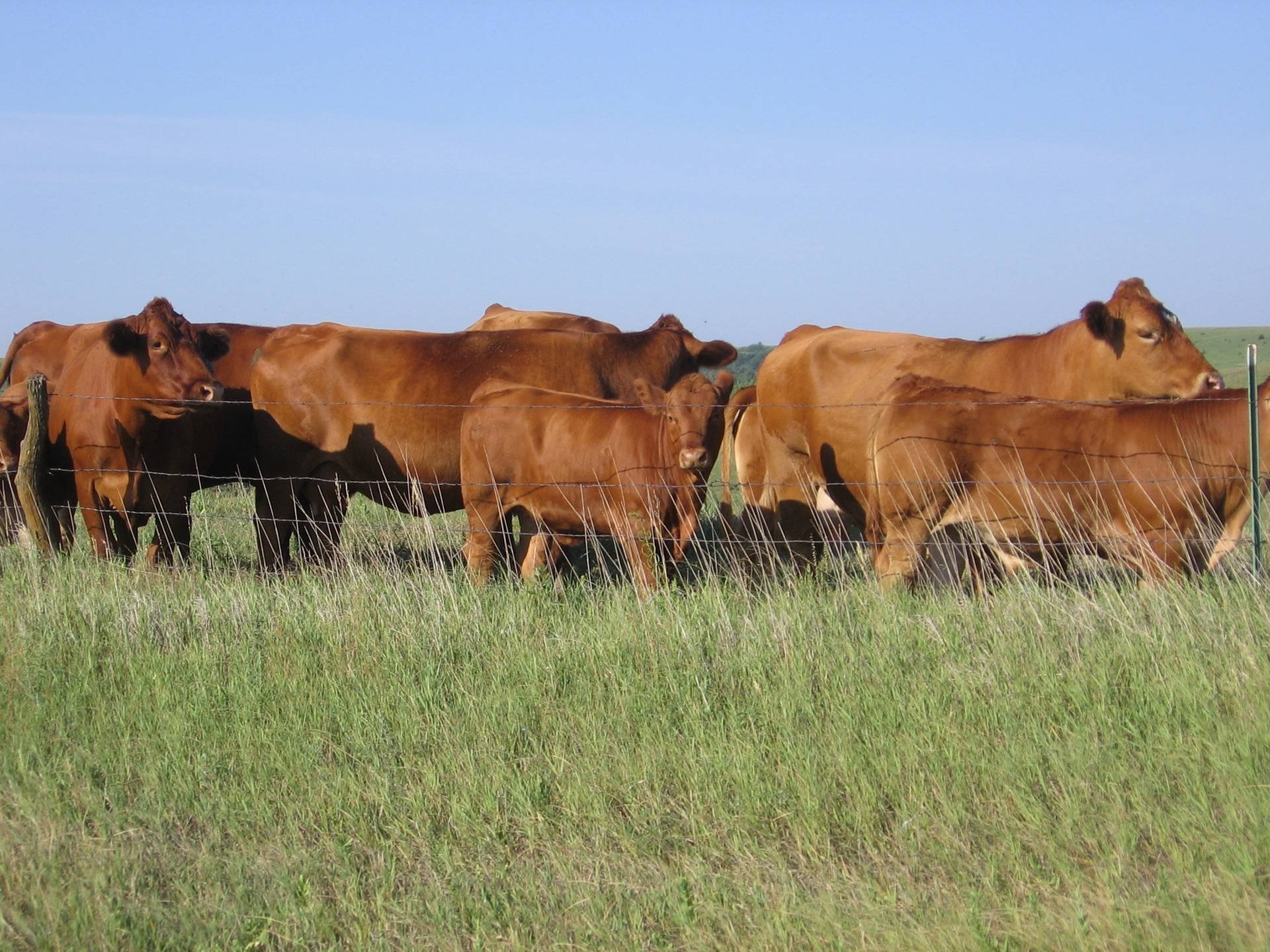
using epd’s
Expected Progeny Differences:
Calving Ease (CE): an EPD that is expressed as a ratio, with a higher ratio representing better (easier) calving ease. This value represents the direct influence a sire has on calving ease. Only first-calf heifer data is included.
Birth Weight (BW): predicts the difference, in pounds, for birth weight.
Weaning Weight (WW): predicts the difference, in pounds, for weaning weight (adjusted to age of dam and a standard 205 days of age). This is an indicator of growth from birth to weaning.
Yearling Weight (YW): predicts the expected difference, in pounds, for yearling weight (adjusted to standard 365 days of age). This is an indicator of growth from birth to yearling.
Milk (MK): the genetic ability of a sire’s daughters to produce milk expressed in pounds of weaning weight.
Total Maternal (TM): a value that combines growth and milk information and a prediction of the weaning weight performance of calves from a sire’s daughters. This value does not have an accompanying accuracy value.
Gestation Length (GL): this EPD is expressed in days and measures the days under or over normal gestation length a sire’s daughters can be expected to calve.
CEM: Calving Ease Maternal – predicts how well an animal’s daughters will calve, with a higher number being easier calving.
Scrotal Circumference (SC): value is expressed in centimeters of adjusted yearling scrotal circumference.
Feedlot Merit (FM): expressed in dollars per head, value passed to progeny. The Feedlot Merit EPD measures the dollar value associated with the expected gain and feedlot efficiency of progeny when fed in a “typical” feedlot arrangement.
ST: Stability – predicts the genetic difference, in terms of percent probability, that a bull’s daughter will stay productive within a herd to at least six years of age.
DMI: Dry Matter Intake – represents the average daily dry matter intake per day consumed in pounds, a negative or lesser value is more favorable.
YG: Yield Grade – predicts difference in USDA Yield Grade score in the finished animal and is expressed in Yield Grade units, a lower YG value is more favorable. The YG EPD is calculated based on CW, REA, and FAT EPDs.
CW: Carcass Weight – expressed in pounds of carcass weight adjusted to a constant fat endpoint.
REA: Rib Eye Area – expressed in square inches of rib eye muscle area adjusted to a constant fat endpoint.
MB: Marbling – expressed in degrees of marbling score, a determinant of USDA Quality Grade. Value is adjusted to a constant fat endpoint.
FT: Fat Thickness – lower scores indicate less external fat, while higher scores reflect more external fat with a difference of .37 inches between a group of animals that scored a 1 vs. and group of animals that scored 10.
TN: Tenderness – represents the animal’s genetic potential for tenderness as measured by Warner-Bratzler Shear Force (WBSF), with 10 being most tender and 1 being least tender, lower shear force mean more tender beef.
DOC: Docility – calm cattle are not just about handler safety, calm cattle eat more, have better response to vaccinations and preconditioning, and are more tender. DOC is the animals genetic potential to be extremely calm or to have calm offspring.
RFI: Residual Feed Intake – is the difference between an animal’s actual feed intake and its expected feed requirements for maintenance and growth. RFI is the variation in feed intake that remains after the requirements for maintenance and growth have been met. Efficient animals eat less than expected and have a negative or low RFI, while less efficient animals eat more than expected and have a positive or high RFI.
ADG: Average Daily Gain – provides an estimate of post-weaning growth, higher scores equal faster growth.
